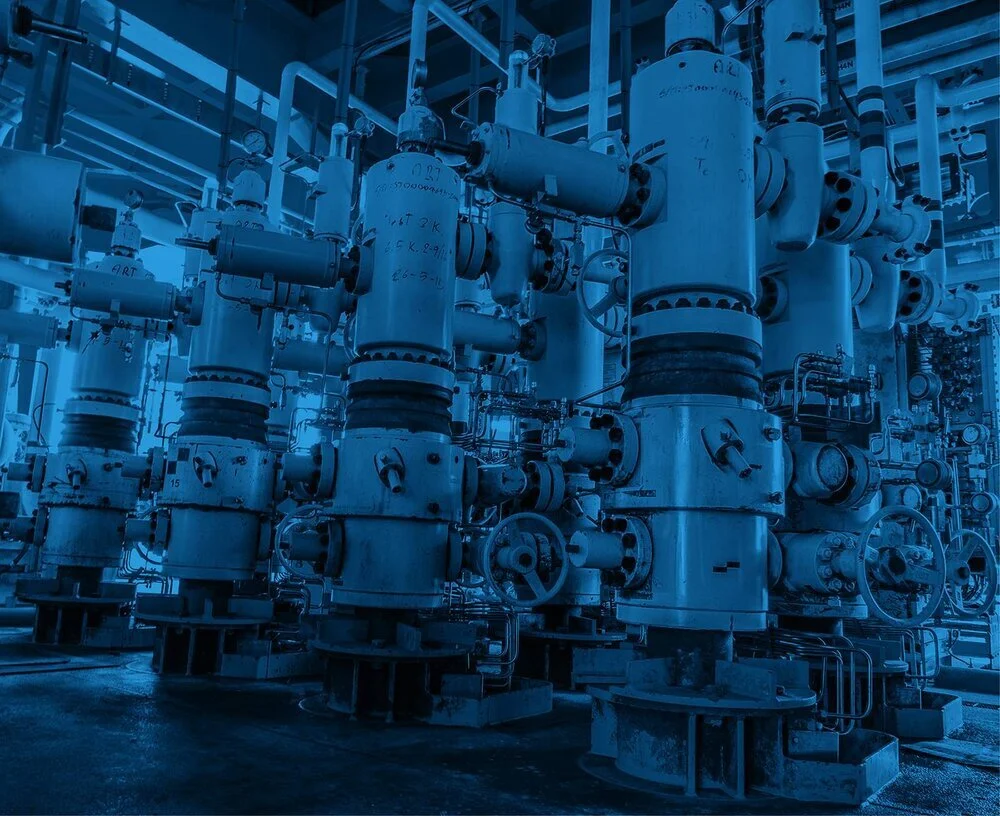IG-H for Packer Isolations
Time Activated. Cures to Soft Flexible Gel. High Compression Value but a Low Torsion/Tear Threshold.
IG-H is not a standard product. It is specifically engineered in Aberdeen to match the Well parameters & formulated at the Well site by combining additional components to allow it to cure & sink in the annular fluid.
IG - Isolation Gel
Two Part Product. Time Activated. Solid yet Soft Flexible Gel Once/When Cured. Breakable after Curing.
IG SDS & IG Technical Data
Contact KCI to request the most up to date versions
What is IG and how does it work?
IG-H is designed to isolate leaks in deep-set Production Packers where the integrity has been lost and Well pressure or fluids are building
It is mixed and deployed as a weighted liquid gel which is heavier than the completion or annulus fluid
It sinks to the bottom of the fluid-filled annulus where it lands and settles on top of the Packer element
The column of IG-H amalgamates & bonds together to form a ring of sealant around the Packer in the annular space
This blocks any Well fluids from passing the Sealant either upwards or downwards
The IG-H remains soft and flexible which moves with the metalwork in the well
The IG-H will simply break up and fall to the bottom of the Well when the Packer is retrieved
Why might Packer and Casing Shoe Isolations be required?
The Packer Element has started to become brittle, crack or perish and is causing leaks
Leaking Packers typically create Well Integrity issues by allowing pressure to build up in the A-Annulus leading to Sustained Annulus Pressure
This can create additional stress within the Well Barrier Envelope and can lead to further issues
The Well may have to be shut in and plugged if the issue cannot be managed
What are the benefits of IG?
It is an effective, easy to deploy sealant with a very high chance of success but a low risk of creating any damage or operational issue to the Well
Simple to mix and deploy onsite with only two people are required to carry out an IG-H deployment
The solution is engineered onshore and approved by the customer before moving offshore
All tooling required is air operated and hand portable
Read about an IG-H success story here…
IG-H FAQs
Click each question below to reveal the answer:
- Is the sealant resin?
IG-H is a bit like a stress ball, soft yet solid. It can take huge compression forces but rips apart quite easily for removal purposes)
- What is the composition and activation principle?
The sealant is provided in four, including: base compound, weighting agent, de-foamer, and activator; Mixing for 5 to 10 minutes before deployment, it is a time activated sealant.
- What is the effect of temperature on sealants?
Temperature will affect the curing time: the higher temperature, the faster curing. Standard curing time is 24 hours, and the sealant can be used in Wells up to 175°C)
- How is it ensured that the sealant reaches the top of the production packer?
1) The annulus where the packer is located should be filled with completion fluid;
2) Squeeze (KCI - Deploy rather than “squeeze”. Very low pressure is required to pump it into the annulus – we just have to overcome the surface pressure if it can’t be bled off) the sealant into the annulus (the sealant will not mix with the completion fluid);
3) fall to the top of the packer by the gravity of the sealant itself (density is adjusted with weighting agent);
4) the well inclination at the packer should be less than 65°. (KCI-50° Max)
- Is surface pressure needed to squeeze sealant into the packer during curing?
We check the parameters of the Well during the engineered phase. There must be a static overbalance of completion fluid of at least 200psi pushing down and energise the cured sealant. The calculation is done based on no surface pressure to replicate a wellhead failure. Surface pressure can be added during the curing phase to push the sealant down into the leak path if required but do not add pressure to keep the sealant in place.
- After curing, how much reverse differential pressure can it possibly withstand?
As noted above, an overbalance must be kept above the sealant or it will not be effective. If more pressure is seen from below than above the Packer then the sealant will be pushed up and the isolation will be lost. The IG-H will not hold pressure from below in an underbalance situation.
- How is the success of the sealant in the packer verified?
Adding pressure at surface will test the isolation. The pressure could be higher than 200psi. 200psi is the minimum hydrostatic overbalance pressure acting on the sealant downhole to energise it with zero surface pressure. Around 1000psi should be OK dependent on the Packer leak size.
Annular pressure is continually detected to ensure no pressure build up is observed.
- What is the sealant density range?
IG-H is variable from 11ppg to 15ppg. 13ppg is the standard weight provided but this will be calculated at the engineering phase. We try to create IG-H at least 2ppg heavier than the completion fluid to endure it drops to the target depth. 15ppg is a very high viscous version that requires special tooling to deploy and is only used is special circumstances.
- In the event that the annulus continues to see gas ingress causing a pressure build up with IG-H in place, what is the possible cause and how would it be solved?
Possible reasons:
1) Under the pressure of the hydrostatic column, all the sealant pass through the leak point of the packer, resulting in sealing failure;
(KCI-IG-H is formulated for each operation. If the leak path is large, we would formulate the IG-H to be cured or semi-cured before it lands on the packer so it does not get pushed through. We would then deploy the final IG-H batch so it is still liquid when it lands on the previous batch to bond everything together. If the Packer has unset or the casing is burst at the packer location we may see a failure that cannot be isolated).
2) There are other leak points except the packer: (KCI-Packer has unset, Casing burst, Tubing Thread Leak, Casing thread leak, Completion components leaking i.e. sliding side door, Polished Bore Receptacle (PBR) etc.)
The customer should carry out an investigation survey – PLT or Acoustic Pick Up tool which should pin point the leak path. If its not at the packer then we should not continue.
- If the PBU is slowed down compared with before pumping sealant, can the re-injection of sealant for sealing be considered?
A contingency application of IG-H is possible above the initial deployment, if that would be considered as a possible solution, but each application is different.
- Can IG-H be used to seal holes in Casing or Tubing?
Unfortunately, we don’t have a workable solution for this type of leak.
This is due to the unknown position of the leak as we don’t have the ability to position or spot the sealant in the free space of an annulus.
Our Isolation Gel – Heavy (IG-H) downhole sealant is designed to drop down a fluid-filled annulus until it reaches either the Packer or Casing Shoe. It needs a reasonably solid base for it to act against to energise and create an isolation.
Blocking holes in Casing is a particularly difficult thing to successfully carry out. It is something that is on our Research and Development plan to look into.


